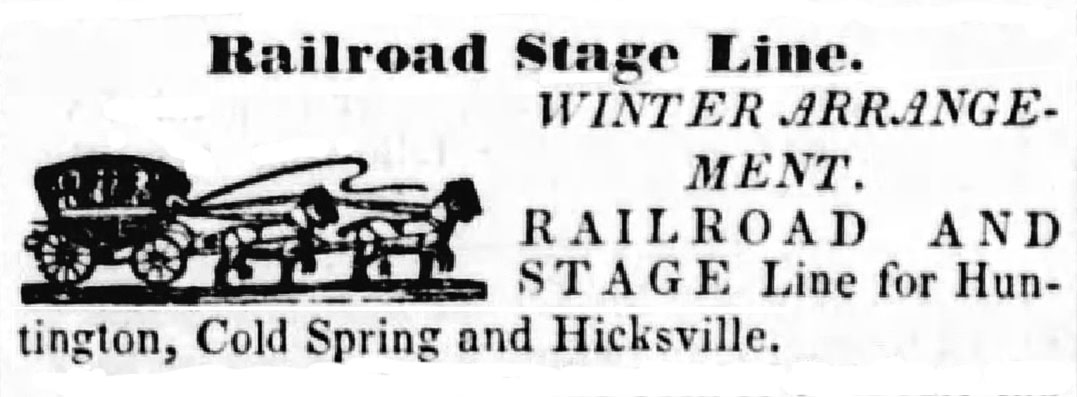Melons
 Thinking ahead: The LIRR announced its Winter stage schedule in July.
Thinking ahead: The LIRR announced its Winter stage schedule in July.
Brooklyn Evening Star, July 6, 1843
In the above announcement of the LIRR’s “Winter Arrangement,” the horses look rather like dogs, and the depiction of the coach is probably equally inaccurate. Stages of the 1840s typically were of the “melon” type, so called because their oval profiles reminded people of melons on wheels, with appendages at the front and rear. One is shown below.
Forty etchings from Sketches Made with the Camera Lucida in North America in 1827 and 1828
Captain Basil Hall, R[oyal] N[avy] Edinburgh, London, 1829
holdings of Thomas Fisher Rare Book Library, University of Toronto

The actual experience of riding in a melon was quite far removed from that of, say, Cinderella riding in her pumpkin. The sea captain who drew the sketch above, having traveled by stagecoach around much of Eastern North America, wrote this:

This account is echoed by other sources, including ones that specifically describe riding the Huntington-Hicksville stagecoach.
 Brooklyn Daily Eagle, December 18, 1909
Brooklyn Daily Eagle, December 18, 1909
From the above excerpt, one might infer that top-heavy stages sometimes overturned. They did, especially where hard-frozen, slippery mud occurred alongside a tempting ditch. The following report follows up on the continuing efforts of Hicksville’s Dr. E. G. Rave to treat injured coach passengers following the toppling of a stagecoach at Lindenhurst in 1888.
 Note: Breslau was then the name for Lindenhurst. Huntington Long-Islander (Hicksville column) December 14, 1888
Note: Breslau was then the name for Lindenhurst. Huntington Long-Islander (Hicksville column) December 14, 1888

